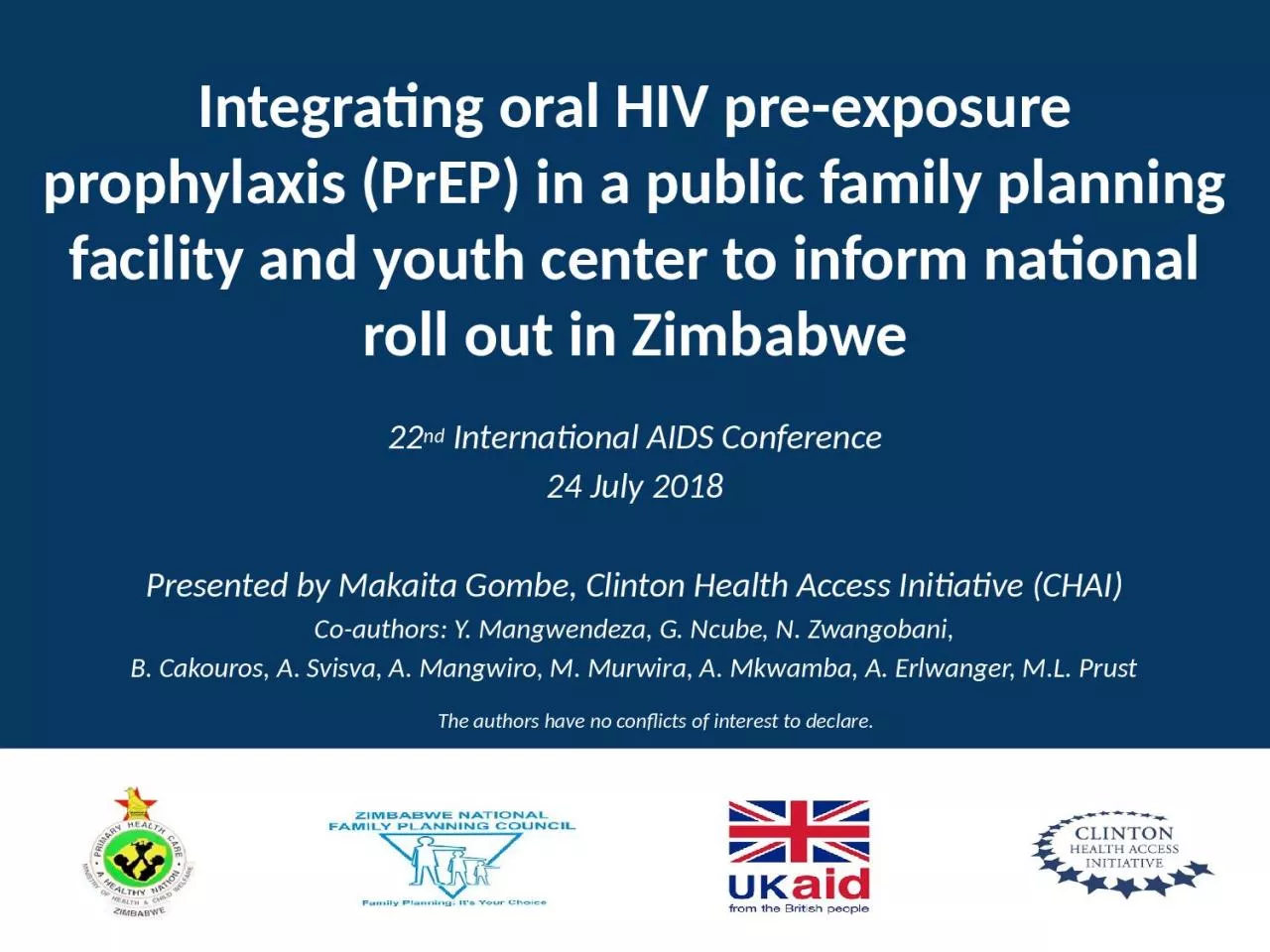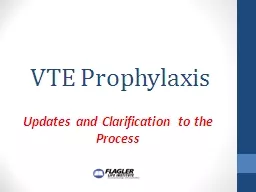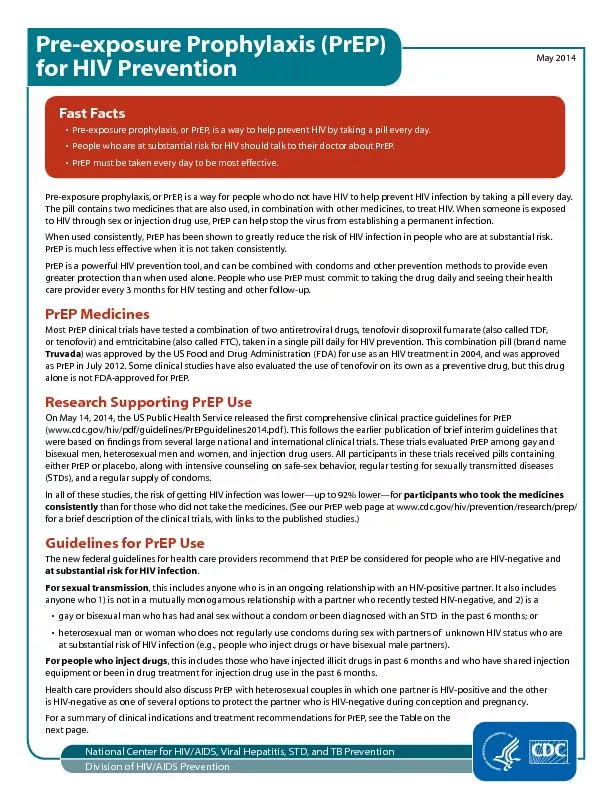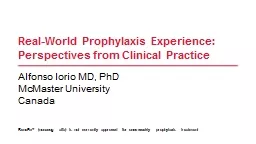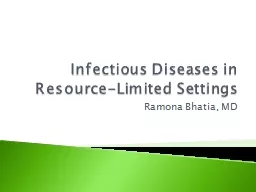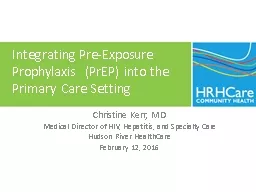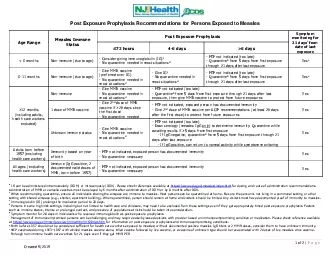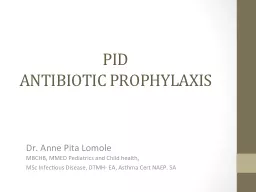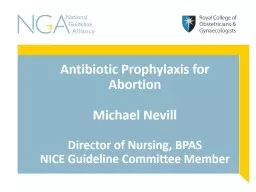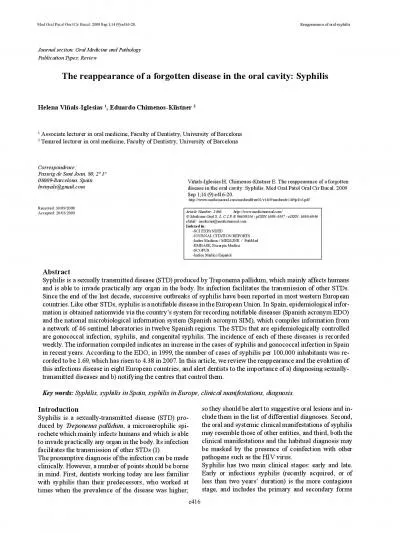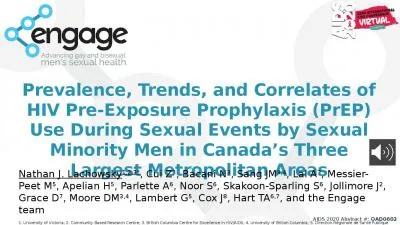PPT-Integrating oral HIV pre-exposure prophylaxis (
Author : elina | Published Date : 2024-02-09
PrEP in a public family planning facility and youth center to inform national roll out in Zimbabwe 22 nd International AIDS Conference 24 July 2018 Presented by
Presentation Embed Code
Download Presentation
Download Presentation The PPT/PDF document "Integrating oral HIV pre-exposure prophy..." is the property of its rightful owner. Permission is granted to download and print the materials on this website for personal, non-commercial use only, and to display it on your personal computer provided you do not modify the materials and that you retain all copyright notices contained in the materials. By downloading content from our website, you accept the terms of this agreement.
Integrating oral HIV pre-exposure prophylaxis (: Transcript
Download Rules Of Document
"Integrating oral HIV pre-exposure prophylaxis ("The content belongs to its owner. You may download and print it for personal use, without modification, and keep all copyright notices. By downloading, you agree to these terms.
Related Documents

